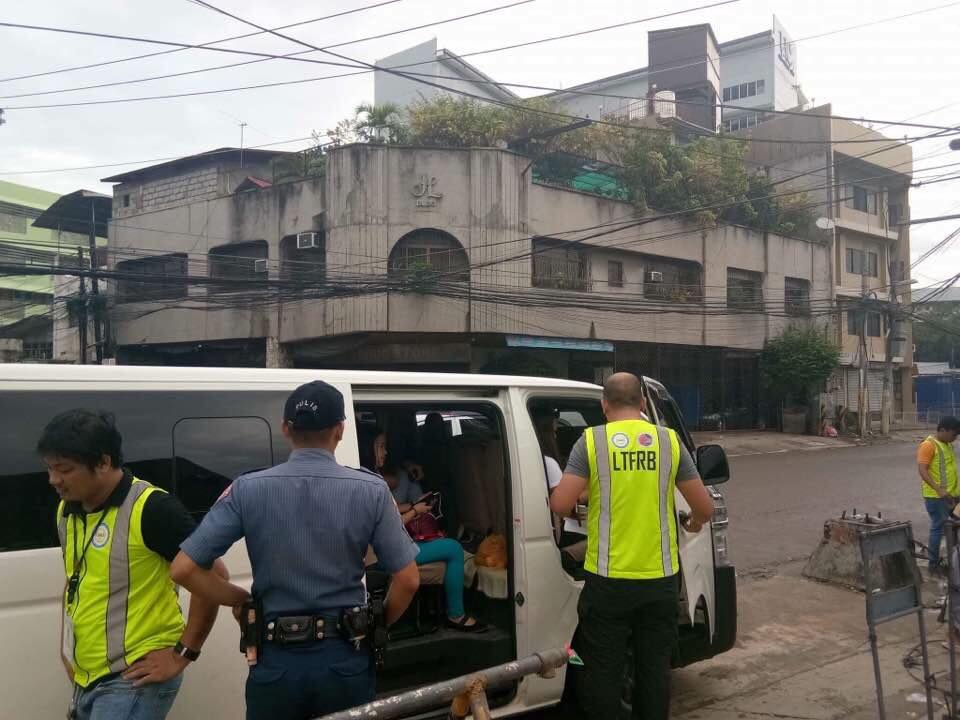How to spot colorum vehicles and why regulators think they’re not safe?

A colorum van was caught across the Cebu South Bus Terminal by operatives of the LTFRB-7 in this 2017 file photo. The van was placed in an impounding area and could only be claimed after a P200,000 penalty is made. | Photo from former LTFRB-7 Director Ahmed Cuizon
CEBU CITY, Philippines — When the term colorum comes to mind, Filipinos often describe them as private plate-vehicles, mostly vans or sports utility vehicles (SUVs), that ferry passengers to their destinations for a fee.
But did you know that this is just one of the many definitions of colorum vehicles?
Colorum is the term regulators used to coin private vehicles operating as public utility ones (PUVs) without authorization from the Land Transportation Office and Franchising Regulatory Board (LTFRB).
Recently, the Land Transportation Office in Central Visayas (LTO-7) apprehended at least 13 colorum vehicles in a span of three days.
READ: LTO-7 apprehends 13 colorum vehicles in three days in September
What is considered ‘colorum’?
The Joint Administrative Order (JAO) No. 2014-01 of the Department of Transportation (DOTr), formerly known as the Department of Transportation and Communication (DOTC), defined colorum vehicles private motor vehicles operating as a PUV without authorization from the LTFRB.
Colorum vehicles also refer to PUVs that operate outside of their routes without prior permit from the Board or outside the exceptions provided under existing memorandum circulars, and those that operate differently from its authorized denomination.
This meant PUV routes picking up passengers outside of its designated routes is also considered a colorum vehicle.
A PUV that has a suspended or canceled Certificate of Public Convenience (CPC), and a PUV with expired CPC and without a pending application for extension of validity timely filed before the LTFRB is also a colorum.
READ: LTFRB-7 warns commuters against ‘colorum’ vehicles
Why unsafe and disadvantageous?
Despite relentless crackdowns from the government, colorum vehicles continue to ply major roads today, putting drivers, passengers – and even motorists’ – lives at risk.
Regulators from LTO and LTFRB consider colorum vehicles unsafe. For one, these vehicles did not undergo the necessary road-worthiness tests.
Colorum units can also be used for criminal activities, like robberies and kidnappings.
Since they basically operate without any franchise, passengers patronizing colorum vehicles may also find themselves paying more than riding an ordinary PUV.
READ: LTFRB: No overloading, overcharging, or operating ‘colorum’ vehicles
How to spot a colorum?
Spotting colorum vehicles, fortunately, is not rocket science. And here are some tips from the LTFRB that might help commuters differentiate a colorum from a legitimate PUV.
One of the easiest ways of finding a colorum unit is the absence of mandated PUV markings like its route.
Its windows are also heavily tinted whereas PUVs operating with the proper franchise have transparent ones.
Colorum vehicles also operate using private plates, not the standard plates meant for PUVs. In addition, some colorum operators often ask for a higher fare than ordinary PUVs plying a certain route.
Operators and drivers of colorum vehicles, when caught, may face fines of up to P1 million for buses, P200,000 for trucks and vans, and P50,000 for jeepneys. The minimum period for impounding is three months. / with reports from Nina Mae Oliverio
Disclaimer: The comments uploaded on this site do not necessarily represent or reflect the views of management and owner of Cebudailynews. We reserve the right to exclude comments that we deem to be inconsistent with our editorial standards.
